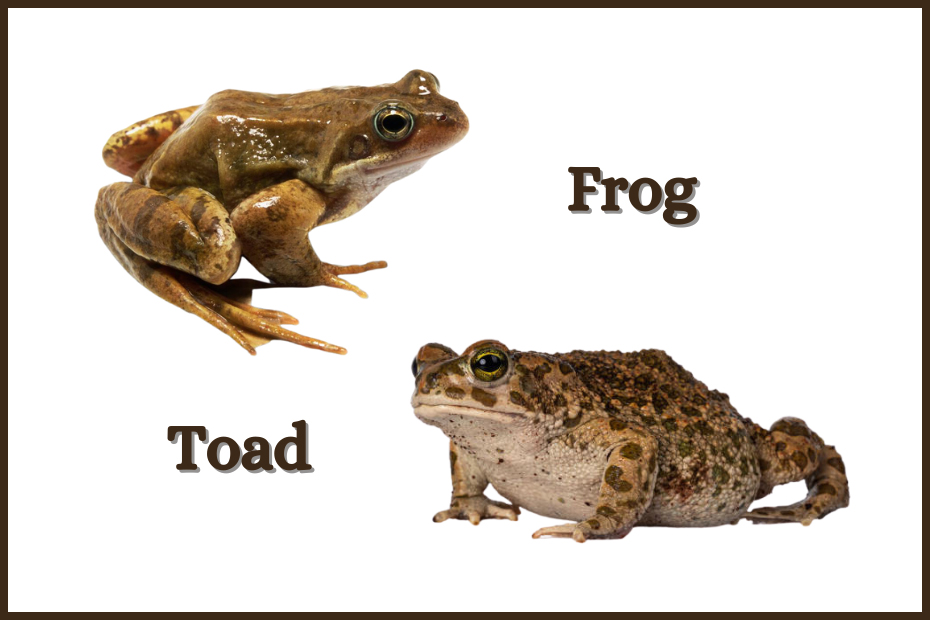The fascinating amphibian inhabitants known as frogs and toads are frequently used interchangeably. Despite being amphibians, they are not the same species. Now, you might be wondering what makes them unique.
Frog vs toad: what are the differences between them? In terms of taxonomy, they are a separate family. Toads have rough skin, but frogs have smooth skin. Toads deposit eggs in chains, whereas frogs do in clamps. Frogs have long, lean bodies with protruding eyes and upper jaw teeth. Toads lack teeth, have smaller eyes, and a muscular physique.
Join us as we discuss the differences between them. Finally, you’ll be able to distinguish between the two species and stop referring to toads as frogs.
Frog vs Toad: Taxonomy and Classification
Frogs and toads are fascinating creatures that have intrigued scientists and nature enthusiasts for centuries. While many people use the terms “frog” and “toad” interchangeably, they belong to distinct taxonomic groups.
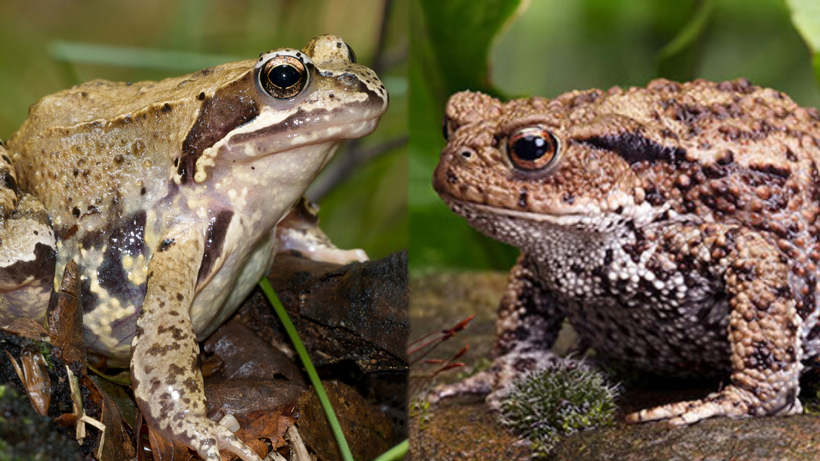
Both frogs and toads fall under the class Amphibia and order Anura (without tail). So, the University of Michigan’s Animal Diversity Web denies any scientific difference between them. However, Penn State University states that All toads are frogs, but all frogs are not toads because their specific classifications differ as follows:
| Types | Frogs | Toads |
|---|---|---|
| Class | Amphibia | Amphibia |
| Order | Anura | Anura |
| Family | Numerous families within Neobatrachia(Ranidae are true frogs) | Bufonidae (True Toads) |
| Genus and Species | Over 7,000 species worldwide | 643 species under 53 genera |
It’s crucial to note that the term “frog” is often used as a catch-all phrase for all amphibians within the order Anura. Anura includes both true frogs and toads. However, from a taxonomic perspective, toads are a specific subgroup within the Anura order.
Physical Characteristics
The physical characteristics of frogs and toads offer valuable insights into their evolutionary adaptations and ecological roles. Let’s explore two key aspects of their physicality: skin texture and body shape.
Skin Texture
If one sign differentiates frogs from toads, it is the texture of their skin.
Frogs
Frogs have sleek, smooth, moist skin. Their skin remains wet even when they are out of water. This smooth skin serves several crucial purposes:
- Moisture Retention: The smooth skin of frogs helps retain moisture, making them well-suited for their predominantly aquatic or semi-aquatic habitats. It prevents dehydration and allows for efficient gas exchange through the skin.
- Cutaneous Respiration: Frogs rely on cutaneous respiration, a process where they absorb oxygen through their skin. The thin, permeable skin of frogs facilitates this exchange of gasses, particularly in aquatic environments.
Toads

In contrast, toads are characterized by rough, warty, dry skin. Their skin is covered with little dumps and bumps. This distinctive skin texture is associated with several adaptations:
- Defense Mechanism: The warts on a toad’s skin contain glands that secrete toxins. These toxins deter potential predators.
- Terrestrial Adaptation: Toads’ rough, dry skin is well suited for a terrestrial lifestyle. It helps prevent water loss in drier environments and provides some protection against abrasions and parasites.
- Camouflage: The texture and coloration of a toad’s skin can aid in camouflage. Thus, they can blend into their surroundings and avoid detection by predators.
Body Shape
Both amphibians differ in body architecture, too.
Frogs

Frogs generally have a more streamlined and slender body shape. Their body features include:
- Long, powerful hind limbs: These limbs are adapted for jumping, a common mode of locomotion for frogs. The length and strength of their hind legs enable them to leap significant distances.
- Webbed feet: Most frogs have webbed toes that aid in swimming and provide better propulsion in aquatic environments.
- Bulging eyes: Frogs often have large, bulging eyes that provide excellent binocular vision, helping them spot prey and predators.
- Teeth: They catch prey with their smaller teeth in their upper jaw. Toads don’t have teeth.
Toads
Toads have a stockier, robust body shape with distinctive features:
- Shorter, stout limbs: Unlike frogs, toads have shorter legs that are not as well suited for jumping. They are more adapted and less suited for swimming compared to frogs.
- Parotoid glands: Behind the eyes, toads have prominent parotid glands that secrete toxins. These glands are a key feature distinguishing them from frogs.
- Smoother and drier skin: As mentioned earlier, toads have rougher and drier skin compared to frogs’ smoother, moist skin.
- Eyes: Their eyes are smaller and more forward-facing. Hence, they have less field of vision.
Implications on Habitat and Behavior
These differences in skin texture and body shape have profound implications for the habitat and behavior of frogs and toads:

- Habitat Preferences
Frogs, with their moist skin and webbed feet, are often found in or near water bodies. They are agile swimmers and are well-suited for an amphibious lifestyle.
Toads, with their rough skin and terrestrial adaptations, are more commonly found in drier environments, although some species are semi-aquatic.
- Locomotion
Frogs excel at jumping and swimming, which allows them to catch prey and evade predators efficiently. Toads are slower moving and rely more on walking and crawling.
- Defense Mechanisms
While both animals have toxins as a defense mechanism, toads are more renowned for their toxic poisons due to their specialized skin glands.
Habitat and Distribution
The diverse world of frogs and toads encompasses various habitats and geographic regions.
Preferred Environments
Though not all species live in the same area, there are some common sites for frogs and others for toads.
Frogs
Frogs are known for their adaptability to various environments. They can be found in a range of habitats, including:
- Freshwater Habitats
- Terrestrial Habitats
- Semi-Aquatic Habitats
- Arboreal Habitats
Toads
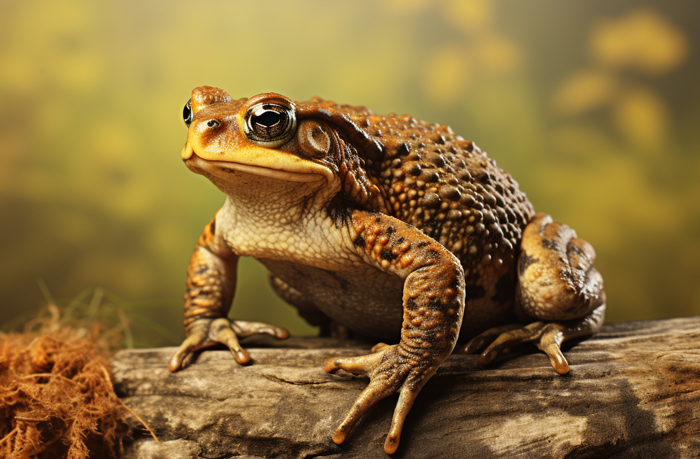
Toads have a more limited range of preferred habitats, which often reflect their terrestrial adaptations:
- Terrestrial Habitats
- Semi-Aquatic Habitats
Reasons Behind Habitat Preferences
The habitat preferences of frogs and toads are influenced by a combination of ecological, physiological, and behavioral factors:
- Moisture Requirements: Frogs, with their permeable skin, depend more on moist environments to prevent dehydration and facilitate respiration. Toads, with their rougher skin, can tolerate drier conditions.
- Reproduction: Both frogs and toads require access to water for breeding. This drives many of them to freshwater habitats during the breeding season.
- Feeding Strategies: Frogs in aquatic habitats often feed on insects and aquatic invertebrates, while terrestrial frogs and toads may consume a wider variety of prey.
Geographic Range
Some examples of distribution patterns of frogs and toads are:
Frogs
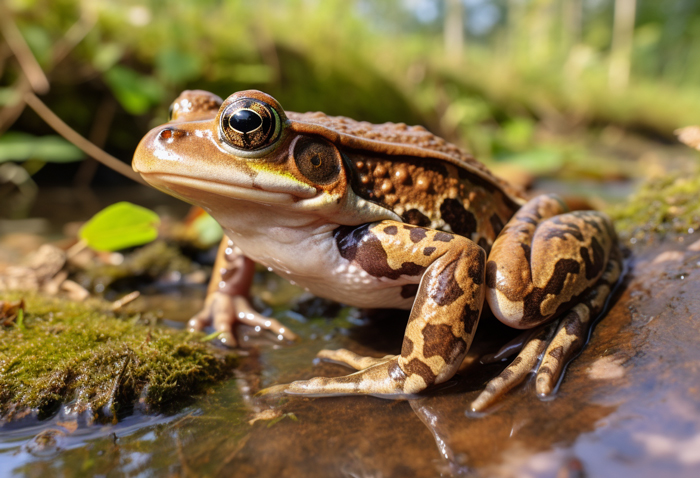
Poison frogs (Dendrobatidae) are exclusive to Central and South America, residing in lush tropical forests.
Glass frogs (Centrolenidae) inhabit the canopies of Central and South American rainforests, notable for their transparent skin.
Tailed frogs (Ascaphidae) are specialized for cold mountain streams in western North America and New Zealand.
Toads
True toads (Bufonidae) are distributed across all continents except Antarctica and Australia, with the Americas having the greatest diversity.
Spadefoot toads (Pelobatidae) are well-adapted to arid and semi-arid environments, found in Europe, Asia, Africa, and North America.
Behavior and Lifestyle
Finally, frog and toad behavior are somewhat different, though there are huge similarities.
Activity Patterns
Frogs
Most frogs are active at night, which aids in hunting for insects and other prey. However, some frogs, especially tree frogs, are active during the day. Nevertheless, frogs are often more active during mating seasons when they produce distinctive calls to attract mates.
Toads
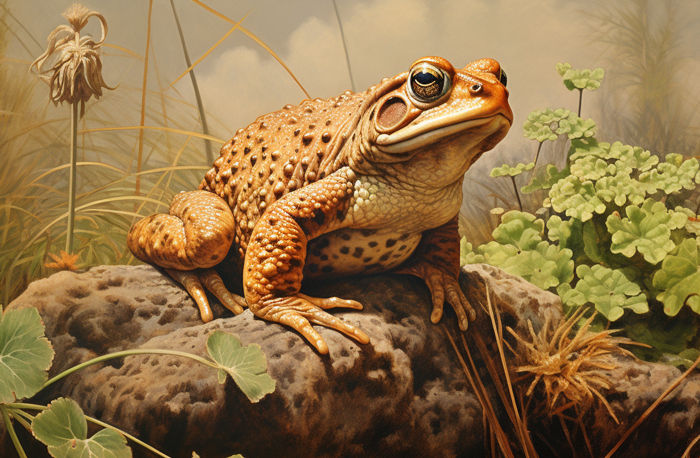
Toads are primarily nocturnal, foraging for food in the cooler nighttime temperatures. Like frogs, toads become more active during mating seasons, producing calls to find mates.
Diet Difference
Diet is not fixed for all species. However, both amphibians are omnivorous, meaning they eat insects, worms, small fish, algae, etc.
Frogs
They opt for aquatic insects like mosquitoes. Other than that, they prey on mollusks, algae, spiders, reptiles, and even small frogs. They hold the prey by their mouth.
Toads
Toads have a similar diet to frogs, focusing on insects and small invertebrates. But they prefer terrestrial insects like ants and beetles. They capture their prey with their sticky tongues.
Reproduction Difference
Both frogs and toads lay eggs in water for reproduction. External fertilization occurs in both amphibians. The way it differs is their egg structure:
- Eggs: Frog eggs, often called frog spawn, are laid in clumps. On the contrary, toad eggs are laid in long chains that sometimes get tangled with plants in the water body. These eggs are known as toad spawn.
- Tadpoles: Tadpoles of both animals have different characteristics. For example, frog tadpoles are slimy, whereas toads are chunky. Their color is also different. Pain black color is a toad tadpole, but a frog tadpole is covered with gold flecks.
The following video shows these differences in detail.
Final Words
Frog vs. toad, while often confused, exhibit clear distinctions in taxonomy, physical attributes, behavior, and habitat preferences. These disparities emphasize the importance of precise identification.
Recognizing these differences is pivotal for tailored conservation efforts and ecological research, allowing us to protect these unique amphibians and their habitats effectively. Furthermore, by studying frogs and toads, we gain insights into ecosystem dynamics, enriching our understanding of the intricate web of life on our planet.

Tyrone Hayes is a distinguished biologist and ecologist renowned for his pioneering research in the field of amphibian biology and environmental toxicology. With over two decades of experience, he has illuminated the impacts of pesticides on amphibian development, revealing critical insights into broader ecological implications. Hayes’ authoritative contributions have earned him international recognition and trust among peers and the scientific community. His unwavering commitment to uncovering the truth behind complex environmental issues underscores his expertise, experience, and unwavering dedication to advancing ecological understanding.
